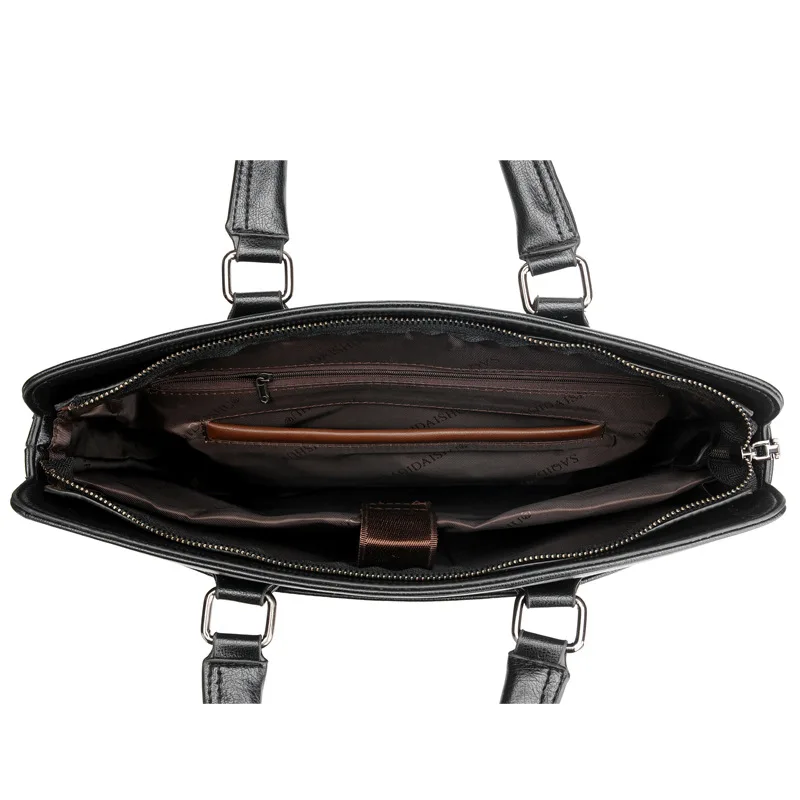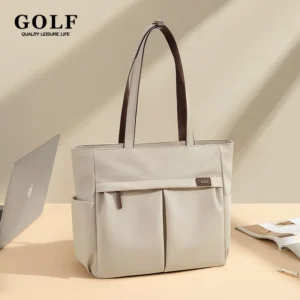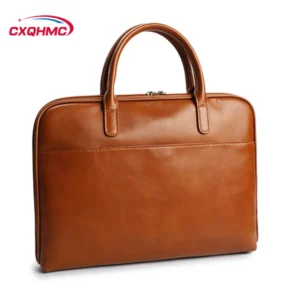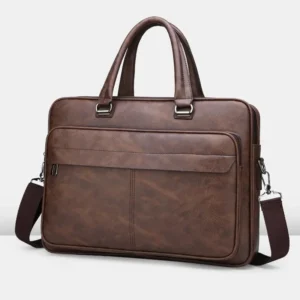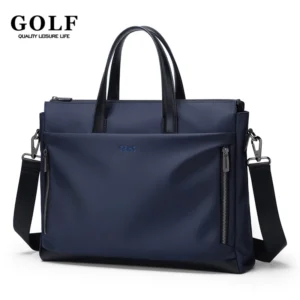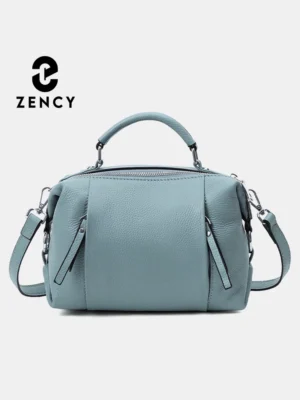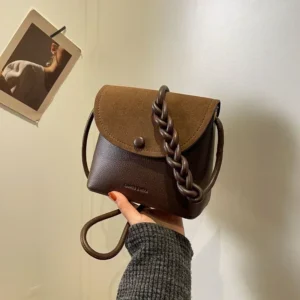Introduction
Inclusive design in leather accessories represents a powerful intersection of style and practicality—creating products that serve the widest possible audience regardless of ability, age, gender, body type, or cultural background. When fashion meets function through thoughtful design, the result is accessories that not only look beautiful but work beautifully for everyone.
Today’s consumers increasingly demand products that don’t force them to choose between aesthetics and accessibility. They want bags, wallets, and other leather goods that reflect their personal style while accommodating their unique needs. This shift is driving market growth, with inclusively designed accessories showing stronger sales and customer loyalty than their conventional counterparts.
The beauty of inclusive design lies in its universal benefit—features that might be essential for someone with arthritis or limited mobility often make products more convenient and comfortable for everyone. Thoughtfully designed gender-neutral leather bag styles exemplify this approach, breaking down traditional barriers while offering enhanced functionality for all users.
This comprehensive guide explores the principles that drive inclusive leather accessory design, the essential features that make these products work for diverse bodies and needs, ethical considerations in production, brands leading the movement, emerging innovations, and practical advice for finding your perfect accessory match.
Understanding Inclusive Design Principles in Leather Accessories
Inclusive design in leather accessories stands on four fundamental principles that guide how products are conceived, designed, and brought to market:
- Accessibility: Creating products that people with diverse abilities can use independently and with dignity
- Adaptability: Designing features that accommodate varying needs without requiring special versions or modifications
- Diversity: Recognizing and designing for the full spectrum of human differences
- Equity: Ensuring products work well for people across different backgrounds, abilities, and contexts
These principles translate directly into practical considerations for leather goods. For instance, a truly inclusive wallet addresses more than just aesthetic preferences—it considers grip strength required for closures, visibility of compartments, ease of card removal, and comfortable pocket fit for different body types.
The spectrum of human diversity that drives inclusive design includes:
- Physical abilities: Varying levels of strength, dexterity, mobility, and reach
- Sensory needs: Different visual, tactile, and auditory sensitivities and preferences
- Age-related requirements: Addressing changing abilities across life stages
- Gender expression: Moving beyond restrictive binary designs to serve all gender identities
- Body diversity: Accommodating different sizes, shapes, and proportions
- Cultural contexts: Respecting and incorporating diverse traditions and preferences
The hallmark of excellent inclusive design is its invisibility—features blend seamlessly into aesthetically pleasing products that simply work better for everyone. Unisex leather bags for professionals demonstrate this principle perfectly, with designs that transcend traditional gender-based limitations while offering enhanced functionality for diverse workplace needs.
Essential Features of Inclusive Leather Accessories
The most thoughtfully designed leather accessories incorporate features across multiple dimensions of inclusivity. Rather than treating accessibility as an afterthought, these elements are integrated from the earliest design stages, creating products that feel intuitive and comfortable for all users.
The best inclusive designs bring together adaptive closures, sensory-friendly materials, adjustable components, intuitive navigation, and body-diverse proportions in seamless harmony. Many minimalist leather bags for everyone showcase how inclusive design can be both understated and highly functional, proving that simplicity often creates the most versatile products.
Adaptive Closures and Easy-Access Features
Thoughtful closure mechanisms make a remarkable difference in accessibility:
- Magnetic snaps provide secure closure with minimal force, ideal for those with limited hand strength or conditions like arthritis
- Smooth-gliding zippers with extended pulls allow for easier gripping and operation with one hand
- Hook-and-loop fasteners offer adjustable security that doesn’t require fine motor skills
- Ergonomic pulls and handles designed to accommodate different grip styles and strengths
Mobility integration features further enhance usability:
- Attachment systems that secure bags to wheelchairs without swinging or interference
- Cross-body designs with strategic weight distribution to prevent strain
- Front-access compartments positioned for easy reach from seated positions
- Stabilizing elements that prevent items from tipping when placed on uneven surfaces
These features benefit not just those with permanent disabilities but anyone experiencing temporary limitations, carrying heavy items, or simply moving through crowded spaces.
Sensory-Considerate Design Elements
Material selection plays a crucial role in creating accessories that work for diverse sensory needs:
- Buttery-soft, drum-dyed leathers minimize irritation against sensitive skin
- Hypoallergenic lining materials prevent reactions for those with sensitivities
- Thoughtfully finished edges eliminate abrasive contact points
- Weight-balanced construction reduces strain during extended carrying
Construction details further enhance sensory comfort:
- Minimized or covered seams prevent irritation at contact points
- Soft or eliminated tags avoid scratching and discomfort
- Strategic reinforcement maintains structure without creating rigid, uncomfortable edges
- Scent-neutral finishing processes accommodate those with fragrance sensitivities
Many vegan leather briefcases excel in these areas, offering alternatives for those with specific material sensitivities while maintaining professional aesthetics.
Adjustable and Versatile Carrying Options
Adaptable design accommodates diverse body types and preferences:
- Extended strap systems with ranges from 12-30 inches (30-76 cm) fit bodies of all sizes
- Multiple attachment points allow positioning that works for different heights and mobility needs
- Belts with expanded sizing ranges and innovative buckle systems that adjust smoothly
- Convertible designs that transition between backpack, shoulder, and hand-carrying options
Expandability features add further versatility:
- Accordion panels that increase capacity without compromising structure
- Modular components that can be added or removed based on changing needs
- Flexible gussets that expand to accommodate varying contents while maintaining a streamlined profile
- Compression options that adjust to different load volumes
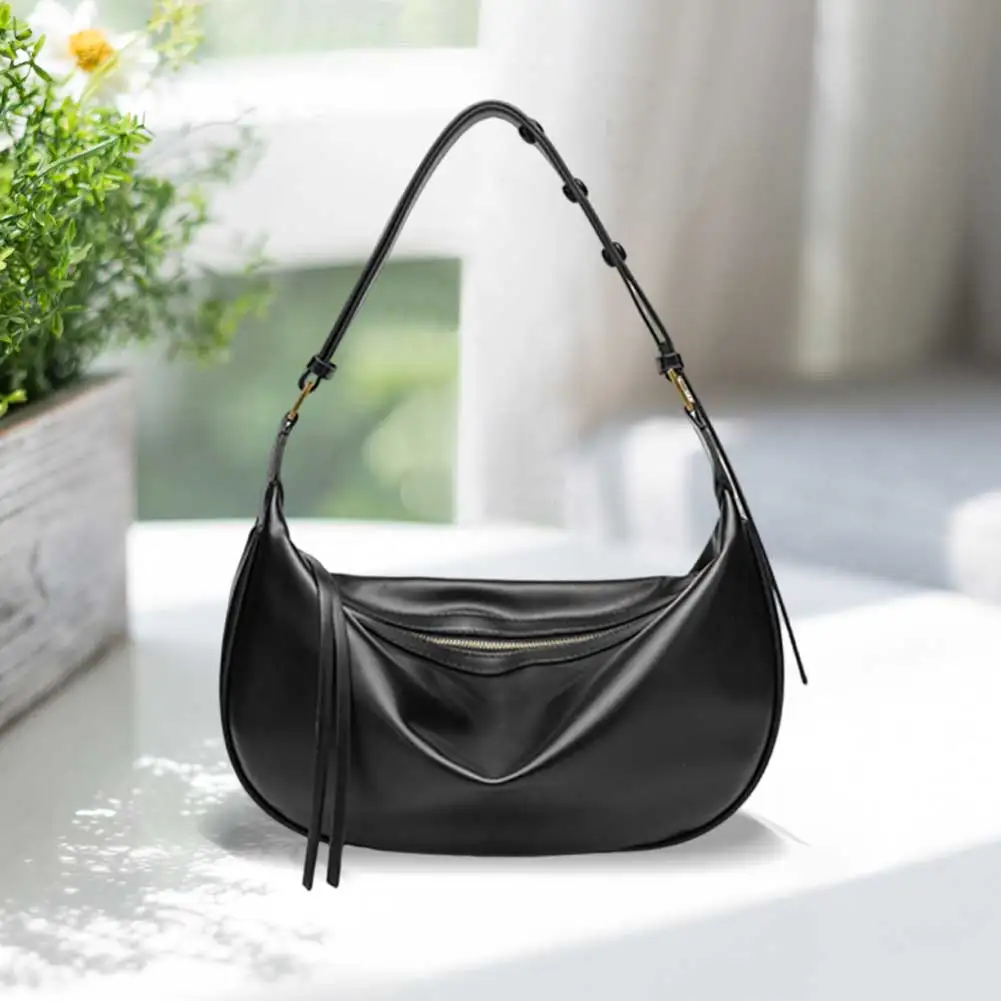
Intuitive Navigation Through Tactile and Visual Elements
Thoughtful navigation features benefit users with diverse visual and cognitive needs:
- Distinct textural differences between compartments help users locate items by touch
- Embossed or debossed indicators mark key features without disrupting aesthetic design
- High-contrast linings make contents more visible against the background
- Consistent placement of features across product lines creates predictable, learnable patterns
Organization systems enhance usability:
- Logical compartment layout based on frequency of use and item importance
- Color-coded sections for intuitive item retrieval
- Contrasting textures to differentiate between areas without requiring visual identification
- Strategic pocket placement for commonly accessed items
These principles appear in many zippered leather work totes, where thoughtful organization systems make daily use more efficient for everyone.
Body Diversity and Gender-Inclusive Design
Truly inclusive accessories recognize and celebrate human diversity:
- Proportional scaling ensures accessories look and feel appropriate on different body types
- Extended sizing in belts, straps, and wearable items accommodates diverse measurements
- Balanced weight distribution prevents strain regardless of user strength or stature
- Gender-neutral aesthetics that avoid unnecessary gendering of practical items
The growing market for gender-neutral messenger bag designs demonstrates how removing arbitrary gender distinctions creates products that serve more people effectively while maintaining sophisticated style.
Ethical Dimensions of Inclusive Leather Accessories
True inclusivity extends beyond physical design to encompass ethical production practices that respect both people and planet. Genuinely inclusive brands consider the entire lifecycle of their products and the welfare of everyone involved in creating them.
Responsible Material Sourcing
Ethical material considerations include:
- Traceable leather sourcing from farms with high animal welfare standards
- Vegetable tanning processes that minimize environmental impact and worker exposure to chemicals
- Transparent supply chains that allow consumers to understand product origins
- Metal hardware free from toxic finishes or harmful extraction practices
Fair Labor and Community Impact
Ethical production practices ensure:
- Fair wages and safe working conditions throughout the supply chain
- Support for traditional artisans and craft preservation
- Employment opportunities for marginalized communities
- Skills training and economic development initiatives
Alternative Material Options
Inclusive brands recognize that ethical concerns extend to material choices:
- High-quality vegan alternatives for those who avoid animal products
- Innovative materials made from recycled or renewable resources
- Durability testing that ensures alternatives match leather’s performance
- Clear communication about material properties and care requirements
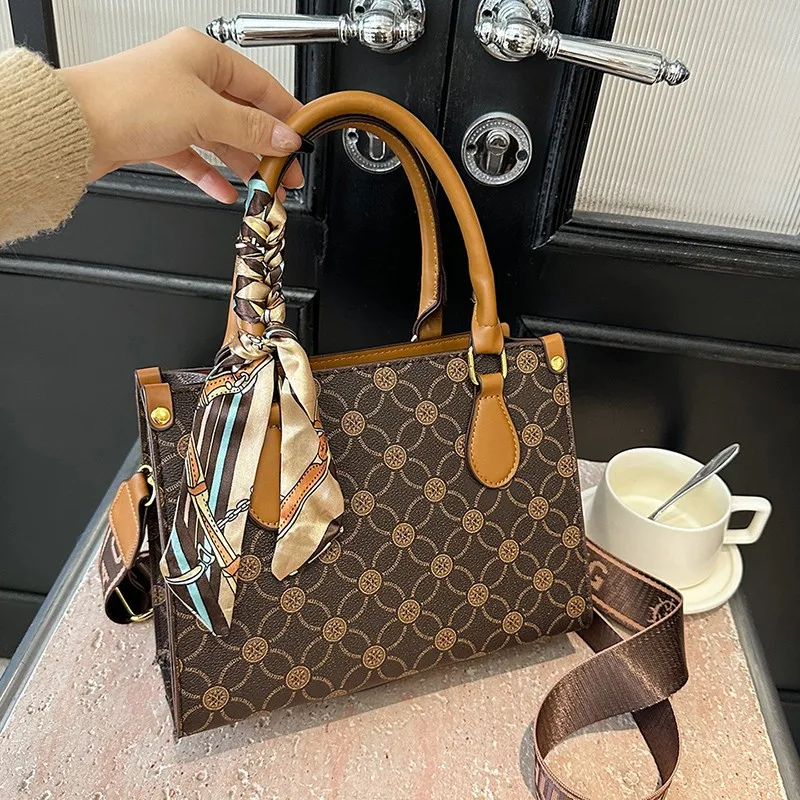
For many consumers, vegan leather messenger bags provide an ideal solution, combining inclusive design features with ethical material choices without compromising on professional style or durability.
Finding Your Perfect Match: Inclusive Leather Accessory Brands
The market for inclusive leather accessories continues to grow, with brands approaching inclusivity from different angles. Some specialize in adaptive features, others focus on gender-neutral designs, while many combine multiple aspects of inclusive design.
What to Look For in Inclusive Brands
When evaluating leather accessory brands for inclusivity, consider:
- Design Process: Do they involve diverse users in product development?
- Feature Integration: Are inclusive elements fundamental to the design or afterthoughts?
- Representation: Do their marketing materials show diverse users with different abilities and bodies?
- Transparency: Are they open about their materials, production methods, and accessibility features?
- Feedback Channels: Do they actively seek and respond to user input for continuous improvement?
Shopping Strategies for Inclusive Products
Finding truly inclusive accessories often requires looking beyond mainstream retail:
- Research brands specifically committed to inclusive design principles
- Read user reviews from people with similar needs to yours
- Contact companies directly with specific questions about features
- Request detailed measurements and specifications before purchasing
- Consider the return policy when trying new brands or styles
Perfect professional vegan leather bags often incorporate many inclusive design features while addressing ethical concerns, making them worth exploring for conscious consumers seeking multifunctional accessories.
Leather Laptop Work Tote, Tan Leather Work Tote, Women's Leather Work Tote, Zippered Leather Work Tote
Price range: $223.62 through $237.97 Select options This product has multiple variants. The options may be chosen on the product pageLeather Laptop Work Tote, Women's Leather Business Tote, Women's Leather Work Tote
$281.42 Select options This product has multiple variants. The options may be chosen on the product pageMen's Slim Leather Briefcase, Slim Leather Laptop Briefcase, Vegan Leather Briefcase
Price range: $120.82 through $131.11 Select options This product has multiple variants. The options may be chosen on the product pageClassic Laptop Briefcase, Vegan Leather Briefcase
$244.29 Select options This product has multiple variants. The options may be chosen on the product pageWomen's Leather Work Tote, Women's Professional Leather Messenger, Zippered Leather Work Tote
Price range: $204.88 through $208.73 Select options This product has multiple variants. The options may be chosen on the product page- $112.39 Select options This product has multiple variants. The options may be chosen on the product page
The Future of Inclusive Leather Accessories: Innovations and Trends
The landscape of inclusive leather accessories continues to evolve with exciting innovations on the horizon:
Emerging Technologies
Technological advances are expanding the possibilities for inclusive design:
- 3D scanning and printing enable personalized accessories fitted to individual bodies
- Smart features like RFID-enabled compartments help users locate items more easily
- Integrated lighting improves visibility of contents in low-light conditions
- Antimicrobial treatments make products more hygienic for immunocompromised users
Co-Design and User Involvement
Leading brands are recognizing the value of involving diverse users throughout the design process:
- Focus groups including people with various abilities and needs
- Prototype testing with representatives from different user communities
- Ongoing feedback loops that inform product refinements
- Collaborations with disability advocates and accessibility experts
Sustainable Innovation
The intersection of sustainability and inclusivity is creating particularly exciting developments:
- Biodegradable materials that maintain inclusive features without environmental harm
- Repair programs that extend product life for greater economic accessibility
- Modular designs that allow component replacement rather than whole-product disposal
- Upcycling initiatives that transform existing materials into new inclusive products
Many leather laptop work totes now incorporate these forward-thinking approaches, combining technological innovation with inclusive design principles for truly modern professional accessories.
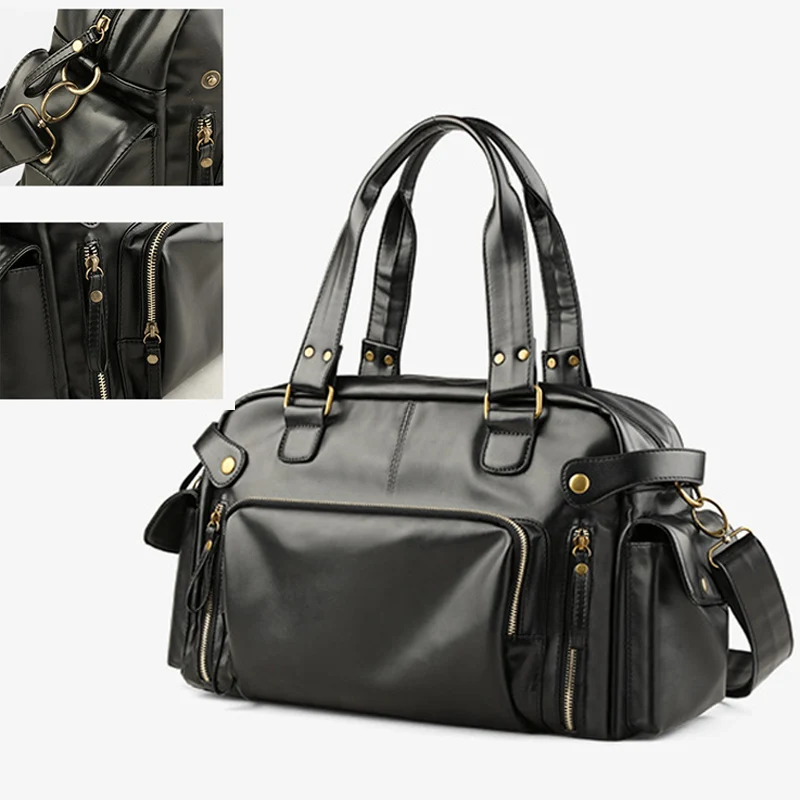
How to Approach Inclusive Design as a Consumer
As a conscious consumer, you play a vital role in advancing inclusive design through your purchasing decisions and feedback:
Evaluating Products for Your Needs
When shopping for leather accessories, consider:
- What specific features would make this product work better for you?
- Are adjustable elements truly adequate for your requirements?
- How intuitive is the organization system for your typical use?
- Does the weight distribution work for your body and carrying style?
- Will the product adapt to your changing needs over time?
Providing Valuable Feedback
Help improve inclusive design by:
- Sharing detailed reviews that highlight both successes and challenges
- Contacting brands directly with specific suggestions for improvement
- Supporting companies that respond positively to accessibility feedback
- Recommending truly inclusive products to others with similar needs
Many women’s leather work totes have evolved directly in response to user feedback, demonstrating how consumer input shapes better products for everyone.
Frequently Asked Questions About Inclusive Leather Accessories
How can I tell if a leather accessory is truly designed inclusively?
Look beyond marketing claims to specific features like adjustable straps with extended ranges, multiple carrying options, thoughtful closure systems, and sensory-considerate materials. Inclusive brands typically detail these features in product descriptions and show diverse users in their imagery.
Are inclusively designed leather accessories more expensive?
Not necessarily. While some specialized features may increase production costs, many inclusive design elements simply represent thoughtful engineering rather than added expenses. Additionally, the durability and versatility of well-designed inclusive products often make them more economical over time.
How do I maintain adaptive features like magnetic closures?
Most adaptive features require similar care to traditional elements. Keep magnetic closures free of debris, avoid exposing them to extreme heat, and periodically check for secure attachment. Quality inclusive products design these features for durability alongside accessibility.
What’s the difference between adaptive and inclusive accessories?
Adaptive accessories are specifically designed for people with certain disabilities or needs, while inclusive accessories incorporate features that work for the widest possible range of users without requiring special versions. Both approaches have value, but inclusive design aims to eliminate separation between “standard” and “special” products.
How can I find products for my specific needs?
Start by identifying your key requirements and search for those specific features rather than general terms like “accessible” or “inclusive.” Contacting brands directly with questions about specific measurements or features can also help you find the perfect match for your needs.
Conclusion: Embracing Inclusive Design in Leather Accessories
Inclusive design in leather accessories represents not just a market trend but a meaningful shift toward products that truly serve human diversity. When style, function, and ethics come together in thoughtful design, the result is accessories that enhance everyone’s experience while leaving no one behind.
By understanding the principles and features that make leather goods more inclusive, you can make informed choices that better serve your own needs while supporting broader accessibility. Every purchase of thoughtfully designed products sends a powerful message about the kind of market you want to see.
The future of leather accessories lies in designs that seamlessly integrate inclusive features while maintaining timeless style and impeccable craftsmanship—creating products that are not just used but truly enjoyed by bodies and lives of all kinds.

